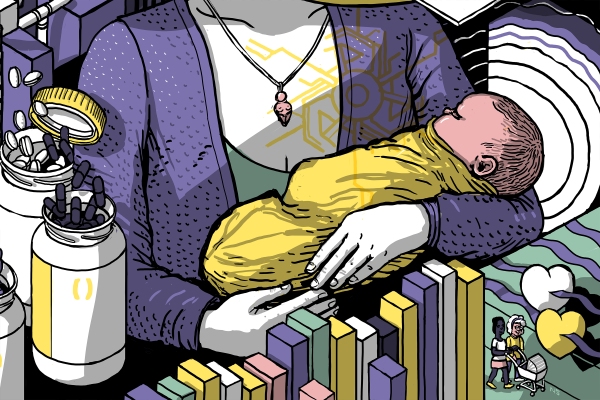One in eight couples, single parents by choice and much of the LGBTQ+ population in the United States seek out fertility services. Studies have shown that women experiencing infertility have experienced depression levels comparable to those receiving a cancer or HIV diagnosis.
This is all aligned with a much larger issue: The dismal state of maternal and child care in the United States.
In 2018, at 17 maternal deaths per every 100,000 live births, the U.S. mortality rate was double that of France and Canada, and nearly triple the number in the U.K. Moreover, mortality rates spike significantly for Black women, at 34 per every 100,000. According to the CDC, 60% of pregnancy-related deaths in the U.S. are preventable.
Countries like Italy and Hungary offer some of the longest periods of leave, with five months covering 80% of wages and 100% of wages for 24 weeks, respectively. Twelve weeks is a popular timeframe with varying amounts of the wages during that time covered by the employer, social security or both, but countries like Pakistan, Mexico and India all cover 100% for the period.
Without fertility services, any unexpected tests or NICU visits, on average, it costs between $5,000 and $11,000 to have a baby (without a C-section) in the U.S. That is just for the birth. While Rhode Island, Hawaii, New Jersey, California and New York have state-sanctioned paid maternity leave, there is no federal mandate that applies countrywide.
Barbara Collura, president of Resolve, a non-profit founded to bring together women facing infertility, says individuals and couples often come to Resolve with a huge lack of understanding around an infertility diagnosis and what happens next. For people on these journeys, looking for answers often only leads the way to more questions.
“They certainly don’t know that their insurance may not cover things like egg donation or IVF,” she says. “Or they certainly don’t know the cost of gestational surrogacy and all this involved with that.”
Patients often have to learn about all this while having to make decisions, without much direction on where to go for resources beyond an OBGYN.
To produce a baby, a sperm, an egg and a uterus are necessary. Collura says in addition to figuring out what patients are working with on that front, they also have to consider finances and the route to take in order to have a baby.
“There are a lot of people who can’t afford what their best course of action is. So, the most affordable care may be subpar, but something they can afford. It’s a strange type of medical care where the people need it, but this cost issue plays into a very convoluted, not cookie-cutter path,” she says.
The spillover effects of poor education
“Notoriously across all cultures, women’s health is not talked about,” Kindbody’s chief medical officer and co-founder Dr. Fahimeh Sasan says.
“There’s just a lack of information out there. For example, up to 40% of the pregnancies end in miscarriage in the first trimester. The majority of women, when they have a miscarriage, truly think they’re the only one, and then they usually will come back to me and say they had a miscarriage, and five of their friends have, and they never discussed it.”
Dr. Sasan pointed to Michelle Obama as a glaring example of how women are taught not to talk about infertility. “She was a very popular First Lady, and during the entire presidency, never shared how she actually had miscarriages and that her daughters are a product of IVF. This never came out until she released her autobiography.”
In the United States, sexual education and/or HIV education is only required in 38 states and the District of Columbia. Of those, only 18 states require the information to be medically correct.
This manifests a vast gap in scientifically accurate information not only for those trying to conceive, but for policymakers as well, subsequently contributing to the condition of reproductive and maternal care in the U.S.
Americans cited medical reasons, their partner and expenses, but they also said the pandemic illuminated the lack of easy access to healthcare as reservations for having children. Birth rates in the U.S. hit a record low in 2020, dropping 4% from a year earlier following a steady decline since the 2008 recession. Population growth in 2021 is set to hit record lows with how COVID-19 has significantly inflated the death rate.
Within the country’s two-party system — Republican and Democrat, conservative and liberal — this lack of baseline factual scientific education around reproductive health and all it encompasses affords a lot of leeway for decisions around state sanctions to be informed by beliefs rather than biology.
And we’re beginning to see the implications of policing women’s bodies.










